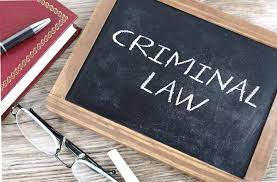The restorative justice revolution has become an alternative approach to traditional criminal justice systems. It focuses on healing and repairing relationships, addressing the needs of victims, and promoting offender accountability. This essay explores the fundamental principles of restorative justice, the elements necessary for its effective implementation, the crucial participants involved, and its potential to transform the traditional criminal justice system.

Critical Principles of Restorative Justice Revolution and Its Objectives:
The restorative justice revolution is guided by several fundamental principles distinguishing it from retributive justice. These principles include:
Restorative justice encourages direct interaction and dialogue between the victim, offender, and affected community members. This engagement fosters understanding, empathy, and the opportunity for healing.
Restorative justice emphasises the importance of offenders taking responsibility for their actions and being held accountable for the harm caused. It seeks to shift the focus from punishment to repairing the damage and reintegrating the offender into the community.
Restorative justice values the input and involvement of all affected parties, including victims, offenders, and the community. Their participation ensures a more comprehensive understanding of the harm, promotes a sense of ownership, and encourages collaborative solutions.
Restorative justice addresses the emotional, psychological, and social impacts experienced by victims and communities. Focusing on healing and transformation seeks to prevent future harm and break the cycle of violence.
Elements of Effective Restorative Justice Revolution Programs:
To achieve its objectives, restorative justice programs must observe critical factors, including preparation and support. Adequate preparation and support for all participants are essential. This includes ensuring that victims have access to emotional support, that offenders understand the process and their role, and that facilitators are trained to handle the dynamics of restorative justice.
Another factor is voluntary participation. For restorative justice to be effective, participation must be voluntary for all parties involved. This ensures that individuals engage willingly and are committed to the process.
It also is a structured process. Restorative justice programs follow a structured process that includes pre-conference preparation, a facilitated dialogue or conference, and a post-conference follow-up. This structure provides a framework for addressing the harm and facilitates a meaningful resolution.
Finally, it is agreement and implementation. Restorative justice aims to reach an agreement satisfying all parties’ needs. This agreement may include restitution, apologies, community service, or other forms of reparation. Ensuring that arrangements are realistic, enforceable, and effectively implemented is crucial.
Participants in the Restorative Justice Revolution Process:
For restorative justice to function effectively, the involvement of specific roles is essential. That is, the victim plays a central role in restorative justice. Their needs, concerns, and perspectives must be prioritised throughout the process. Their participation allows for the expression of emotions, the opportunity for closure, and the healing potential.
The offender must be willing to acknowledge their responsibility for the harm caused and actively engage in repairing the damage. By actively participating, offenders gain a deeper understanding of the impact of their actions and can work towards making amends.
A trained facilitator guides the restorative justice process, ensuring a safe and respectful environment for all participants. They assist in fostering communication, managing power dynamics, and facilitating dialogue to achieve understanding and resolution.
And finally, the involvement of community members is crucial, as they represent the broader social context within which the harm occurred. Their presence encourages community support, reintegration, and the prevention of future offences.
Potential Transformations of Traditional Criminal Justice:
Restorative justice can transform the traditional criminal justice system in several ways, like Victim-Centred Approach. Restorative justice places victims at the forefront, recognising their needs and giving them a meaningful voice. This shift promotes healing, increases victim satisfaction, and facilitates a more holistic approach to justice.
Another way is offender accountability and rehabilitation. Restorative justice promotes offender accountability by directly confronting the harm caused and fostering a sense of responsibility. Focusing on rehabilitation rather than punitive measures, it offers opportunities for personal growth, reducing recidivism rates.
And also community engagement and empowerment: Restorative justice actively involves the community, creating opportunities for dialogue, understanding, and shared responsibility. This engagement strengthens social bonds, encourages a sense of belonging, and empowers the community to address issues collectively.
Concerns and Criticisms of Restorative Justice:
While restorative justice has demonstrated positive outcomes, it is not without concerns and criticisms. Some common problems include:
Power Imbalances: Restorative justice relies on a level playing field, but power imbalances between victims and offenders can hinder the process. Addressing these imbalances through skilled facilitation and ensuring the victim’s safety and agency is crucial.
Limited Applicability: Restorative justice may not be suitable for all types of crimes or offenders. Serious offences or cases involving individuals unwilling to take responsibility may challenge its implementation.
Inadequate Support and Resources: Restorative justice requires adequate support and resources to be effective. There must be more funding, access to trained facilitators, and a lack of community involvement to ensure its success.
In conclusion, restorative justice revolution embodies critical principles aimed at healing and repairing relationships, promoting offender accountability, and addressing the needs of victims and communities. Observing the necessary elements and involving key participants can transform the traditional criminal justice system. While concerns exist, addressing these challenges can contribute to a more inclusive, victim-centred, and community-oriented approach to justice.
References:
1. Zehr, H. (2002). The little book of restorative justice. Good Books.
Amazon link: https://www.amazon.com/Little-Book-Restorative-Justice/dp/1561483761
2. McCold, P. (2003). Evaluating restorative justice practices. In R. A. Duff & D. Garland (Eds.), A reader on punishment (pp. 395-419). Oxford University Press.
Book chapter link: https://www.oxfordscholarship.com/view/10.1093/0195167980.001.0001/acprof-9780195167984-chapter-17
Restorative Justice Revolution





